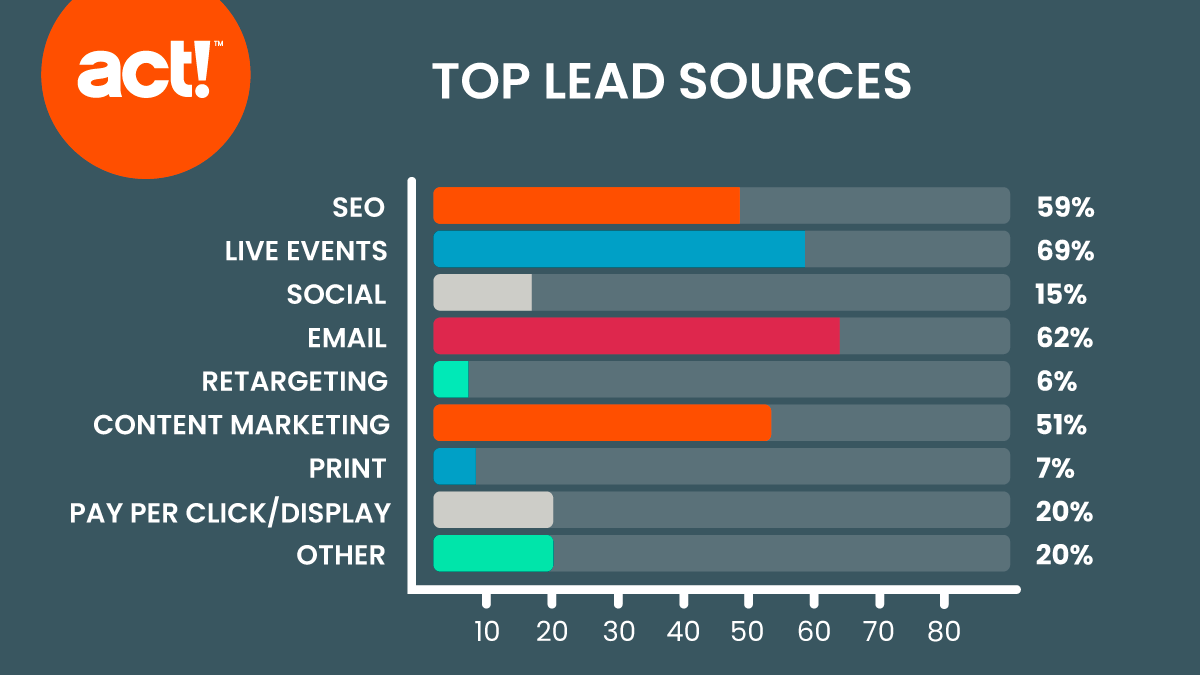Where can I find people who are interested in my products? How can I tempt them to part with their contact information? How often should I contact them, and what should I say? Can I skip all of this and just turn up at their homes, demanding they buy these products for goodness sake?
As these questions are keeping so many B2B marketers like you up at night, we decided to distill 5 effective B2B lead generation hacks into this actionable article, to help you hit the ground running.
Who is a lead, and what is lead generation?
Before we continue, we think it is important to define who a lead is so that we’re clear about our objectives. A lead is someone who has shown some interest in your company and who has the potential to become a buyer at some point. Lead generation is a series of marketer-led steps created with the intent of turning strangers into interested prospects and eventually, buyers.
Your job as a marketer involves finding these leads, and then through tailored communication, nurturing and educating them until they turn into buyers.
Where does this activity fit in the grand scheme of things? This is like asking where the heart fits in the grand scheme of the body – leads are the lifeblood of every business. Without leads, there are no customers and without customers, it’s game over.
Where do B2B leads come from?
The answer to this question varied depending on who we asked. When asked what the biggest sources of leads were, Chief Marketer’s research showed that the biggest source of leads across businesses was e-mail. On the other hand, Hubspot’s research found that the highest source of leads was a mysterious ‘Other’ which they defined as a culmination of consistent marketing efforts, and an organic mashup of all kinds of activities, behaviours and efforts.
In other words, ‘everything’.

So rather than focus on the arbitrary, let’s look at 5 b2b sales lead generation hacks.
How to do b2b lead generation
1. Use LinkedIn lead gen ads
LinkedIn has launched a simple lead generation form that simplifies your sales b2b lead generation efforts.
To do this right, you will need to start by creating an attractive offer, as this is what will capture the attention of your audience.
A good offer should be something perceived to be of such high value to your target audience, that they are willing to exchange working e-mail addresses for it. How can you tell what your audience will value? Research. Visit discussion groups to identify what resources your target audience seems to be asking for over and over again. Examples of high-value resources include eBooks, webinars (including archived), guides, templates, coupons, new industry research, exclusive industry research, etc.
Once your offer has been set up, set up an ad campaign on LinkedIn for the purpose of lead generation. LinkedIn offers a step-by-step walkthrough showing how to do this. Potential leads who click on your call-to-action button will be taken to a form pre-filled with information from their LinkedIn profiles. This takes the pain out of having to fill out a form and makes the process of responding to your advert easy and frictionless.
2. Create a microsite with the sole purpose of lead generation
A microsite is a specially designed website created for the specific purpose of generating leads for your business. While your corporate website is probably an excellent vehicle for creating awareness around your brand, microsites are three times as effective as corporate websites when it comes to lead generation. Businesses use SEO-optimised microsites as evergreen sources of leads because they convert so well. This high conversion rate is probably down to the fact that these microsites are built with one objective, and one objective alone in mind – to generate leads. Sure, the hardest bit of work goes into setting them up in the first place, but once they are set up, you can be sure of a regular stream of leads to your main business/product offering.
So how do you set up a microsite to generate leads for your business regularly?
- Start with research, and seek out a topic with a high search volume. A high-ranking keyword is a good foundation to build your microsite on, so put the research in at the beginning. You can enlist the help of the multiple keyword research tools out there – Google Keyword Planner, Moz, Keywordtool, Soovle, and more!
- Draw users in with the right kind of content. Ensure that your content delivers and that if any visitors leave your site at all, they leave a little more knowledgeable about your keyword than they were when they arrived. How can you tell what the right kind of content for your readers is? Again, user research. You need to carry out research on your customers to understand who they are, where the gaps in their knowledge lie, and how best you can fill those gaps. Then use your microsite to demonstrate your knowledge of the subject matter, showing why they should trust you.
- Craft your CTA with clarity. Apart from offering information about your microsite’s theme, your site should make it clear to users what action they need to take next. Your call-to-action is clearest and most effective when your target audience is well understood and the next step is clearly articulated.
- Keep your design simple and uncluttered. While a microsite frees you from the shackles of conformity to your brand’s theme, there is still a need to maintain an alignment with your brand. Ensure that your microsite is a good representation of your brand by using quality photographs and easy-to-read font and graphics to ensure that your readers do not get distracted from the message.
3. Host webinars
Webinars are so effective for lead generation because they put you in a position of authority, which earns you the trust and credibility of your audience. The potential for interaction and rapport-building is so much greater with a webinar than with downloadables, and once you enjoy this position of trust, converting leads into buyers becomes a breeze. Neil Patel lays out a great step-by-step blueprint here for generating leads through webinars.
4. Speak at conferences
Public speaking has a relatively low barrier to entry, and it is one of the quickest ways to establish yourself as an authority in your chosen niche. The reason why public speaking is such an effective lead generator is simple – as a regular salesperson, you may have to make the same sales pitch 10 times to 10 different people. As a speaker at an industry event, on the other hand, you are positioned in front of potential leads, sharing your expert knowledge. To be able to make the most of a public speaking engagement for maximum lead generation, do the following:
- Negotiate a sponsorship deal. You could offer to waive your speaking fee in exchange for some self-promotion or product promotion.
- Offer valuable content. There is simply no shortcut to educating your audience as best as you can, as the more education you put out the more credibility points you get.
- Collect contact data. This is the most important step and the reason why you’re here. You should have a plan for collecting contact details from your audience – whether it is for the purpose of sending presentation slides, case studies or some other useful content.
5. HARO
Help a Reporter Out is a (mostly free) sourcing service that links English-speaking journalists from all over the world to a large database of sources and experts on various topics. If applied in the right way, it can be a valuable source of B2B lead generation. Once you find a topic within your niche, you can reach out to a journalist and grant a voluntary interview as an expert in your field. Most journalists will agree to quote your business name in your quote, giving you visibility in big publications. All you need to make the most from HARO requests is some patience, diligence in responding, and a homepage designed to convert visitors into leads.
There you have it, folks. Rather than get lost in the big sea that is lead generation, why not implement these simple strategies one by one and turn your time into leads. Regardless of what industry you find yourself in, we hope you find these strategies easy to implement, and effective in your b2b lead generation efforts.






